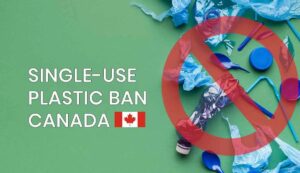Written on: September 1, 2022 by Cassandra Taylor
CEPA one step closer to becoming Canadian law
On June 9, the Senate Standing Committee on Energy, the Environment & Natural Resources completed its review of Bill S-5 and voted to strengthen it before returning it to the full Senate. Bill S-5 modernizes the Canadian Environmental Protection Act (CEPA), which aims to prevent pollution and to protect the environment, human life and health from the risks associated with toxic substances.
For the first time in federal law, Bill S-5 would require the government to consider the cumulative impacts of toxins on vulnerable populations and the environment and recognize that every individual in Canada has a right to a healthy environment. To protect that right, the Minister of Environment & Climate Change and the Minister of Health will be required to develop, consult on and publish a Plan of Chemicals Management Priorities within two years.
The multi-year plan will include the evaluation of substances and other chemicals management initiatives such as research, risk assessment and monitoring. The Minister of Environment & Climate Change will also be ordered to publish and maintain a “Watch list” of substances of potential concern. Schedule 1 of CEPA 1999 will be split into two parts. Part 1 includes the highest risk substances that are either persistent and bioaccumulative, or inherently toxic, and for which prohibition will be given priority. Other toxic substances will be added to Part 2 and will continue to be subject to standard risk management actions, such as pollution prevention.
Considering that CEPA has not been updated since the late 1990s, environmental groups have recently been pushing for improvements to better protect public health and the environment. Concerned parties are calling for further improvements to the bill in the House of Commons to address transparency, mandatory labeling of toxic ingredients and shorter regulatory timelines to eliminate dangerous toxic chemicals.
Bill S-5 will return to the Senate for additional debate and a final vote, which if passed, would refer it to the House of Commons. The Senate and the House must approve a bill before it can become law.

Canada bans single-use plastics
Plastic pollution has become a ubiquitous problem in recent years and due to the slow degradation rate of product packaging and other disposable items; we can be regrettably certain that plastic debris already present in our environment is not going anywhere soon. In response to this growing environmental concern, the Government of Canada published final regulations prohibiting manufacture and import of single-use plastics on June 20.
Products covered under the new ban include:
• Checkout bags;
• Cutlery;
• Foodservice-ware made from or containing problematic plastics that are hard to recycle;
• Ring carriers (i.e. those designed to surround beverage containers in order to carry them together);
• Stir sticks; and
• Straws (with some exceptions)
The ban on the import and manufacture of these items, with a few targeted exceptions, will come into effect in December 2022. To provide businesses time to transition to alternatives and exhaust current supply, the sale of specified single-use plastics will not be prohibited until December 2023. Additionally, Canada will be prohibiting the export of plastics in these six listed categories by the end of 2025.

TC proposes dangerous goods registration database
On June 25, Transport Canada (TC) released proposed amendments to the Transportation of Dangerous Goods Regulations (TDGR). The regulatory proposal would require any person who imports, offers for transport, handles or transports hazardous materials to register in a new database and to provide administrative information about their activities related to the handling of dangerous goods.
These changes have come about because previous audits of Canada’s Transportation of Dangerous Goods (TDG) Program found deficiencies that were deemed a public safety risk. Among the issues, the Commissioner of the Environment & Sustainable Development (CESD) highlighted that TC did not know who is involved in the handling and transport of dangerous goods in Canada and did not have sufficient information to understand the risks of some products and operations, or the means to collect such information. They also found the TC did not have the tools needed to assess risk and properly evaluate priorities for the risk-based oversight program.
Although TC has developed a risk-based system to prioritize its inspections of TDG Sites operated by persons involved in DG activities, the CESD found in 2020 that the information included in the system is outdated or incomplete. The dangerous goods registration database seeks to solve this problem by ensuring that TC is provided accurate and current data about those involved in dangerous goods activities in Canada.
Registrations would need to be renewed and updated annually and any changes to administrative information would need to be reported within 30 calendar days. There will be a one-year transition period to comply for those who are already involved in transport of dangerous goods in Canada. Those beginning new operations after the amendment comes into force would have 90 days to comply.
The comment period for the proposal ends on Sept. 3, 2022.
Interactive website pilot released
To modernize Canada’s regulatory system and enhance regulatory cooperation, the Treasury Board of Canada Secretariat (TBS) is requesting feedback from organizations and individuals impacted by Canadian regulations. A new interactive online platform called Let’s Talk Federal Regulations has been released to test new tools available to enhance engagement practices and aid in gathering information that will assist the development of new regulatory policies and initiatives in Canada.

The TBS is planning to post several projects on the Let’s Talk Federal Regulations platform to seek feedback on topics including:
• How to improve initiatives to modernize Canada’s regulatory system and regulatory processes;
• How Canada’s regulatory system can support economic recovery from the COVID-19 pandemic;
• Challenging regulatory processes and barriers that excessively impact trade, economic growth and innovation; and
• Suggestions on potential areas of regulatory cooperation with other jurisdictions to reduce regulatory misalign- ment and barriers to trade.
Each project will have a distinct topic, with tools made available for a specified period of time so that interested parties may submit their views, respond to or comment on proposals and review proposals received.
Check out the platform periodically to see if any projects are of interest to you and share your feedback or suggestions. New projects are expected to be added over the coming months.

Health Canada consults on supply chain transparency
In February of 2022, the Government of Canada announced its intent to enhance chemical ingredient transparency throughout the supply chain and to strengthen mandatory labeling for consumer products such as cosmetics, cleaning products and flame retardants in upholstered furniture.
Environment & Climate Change Canada and Health Canada carried out a series of workshops and interactive events in a policy lab format to collaboratively bring participants together to develop and test innovative solutions. The workshops, which were open to all Canadians, took place during the Spring and focused on how attendees believed the Canadian Government can take action to improve information about chemicals in product supply chains. The next phase of the policy lab will take place this Fall with a focus on refining potential solutions.
The Government of Canada intends to publish a broader strategy in 2023, outlining policy actions that could include new legislation, as well as voluntary or collaborative initiatives. We can expect to hear more about the possibility to require mandatory labeling of certain products by Spring 2023. SPRAY